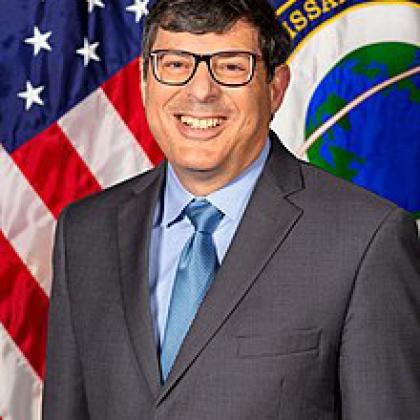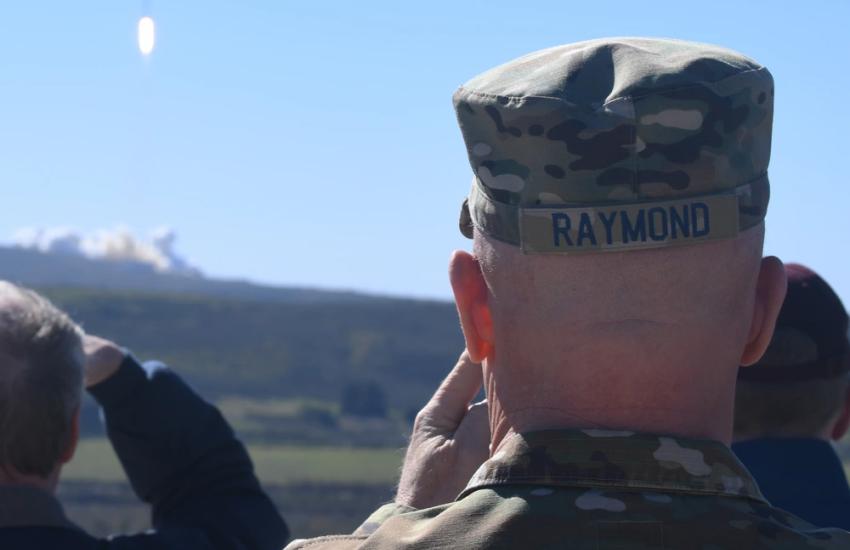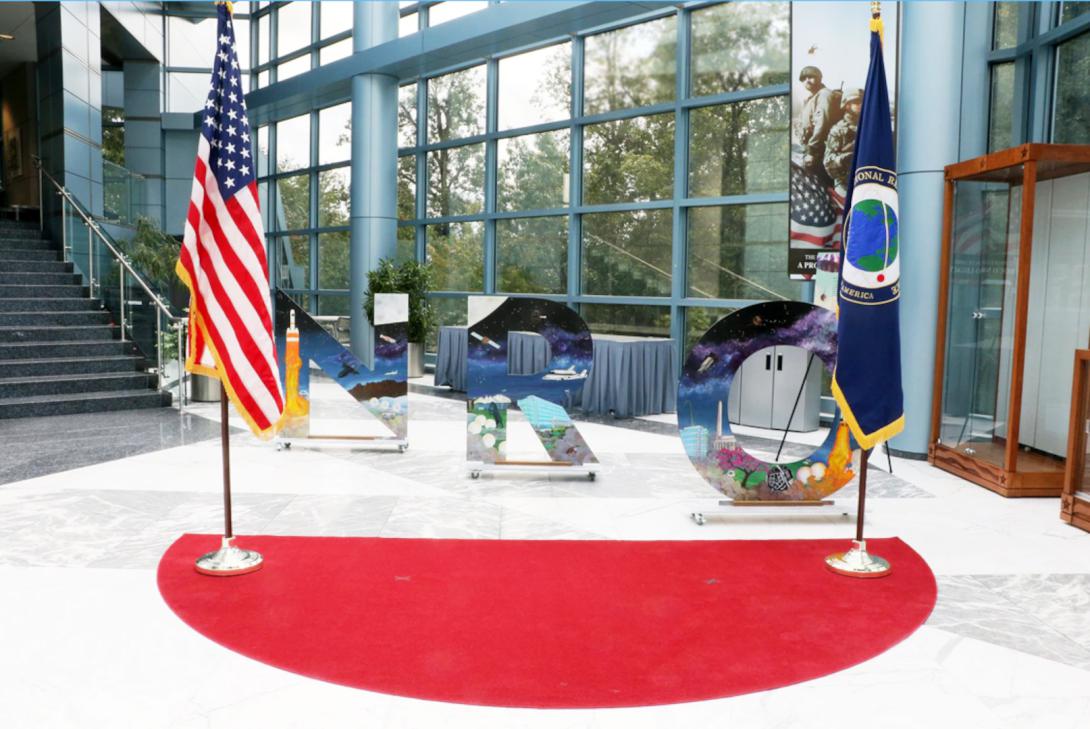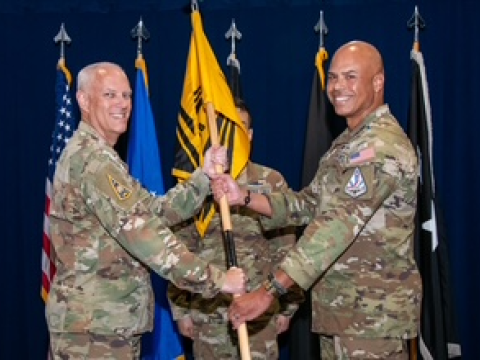The NRO Adjusts Its Orbit
The National Reconnaissance Office is retooling its architecture and strengthening its partnerships to face a more complex near-peer adversary environment. In particular, the NRO, as it is called, is redefining how it works with the U.S. Space Force and the U.S. Space Command. The commercial sector, in turn, is providing key services and spacecraft buses more and more to expand the NRO’s space-based intelligence surveillance and reconnaissance, according to NRO Director Chris Scolese.
“The NRO has been around for more than 60 years, and for about half of that, we were a secret. Nobody knew who we were, and [while] that was a good thing, oftentimes, people don’t really know what the NRO does,” Scolese said during a Mitchell Institute for Aerospace Studies event with Gen. David Deptula, USAF (Ret.). “We are entirely focused on delivering intelligence surveillance and reconnaissance (ISR) from space. Our challenges have changed as the world changes. If you think about the 1960s, we could drop film from the satellites in parachutes and pick them up with an aircraft….That won’t work anymore.”
To meet today’s threat environment, the NRO is taking steps to protect its assets against possible near-pear adversarial aggression in space. “Part of what we’re doing going forward is we are proliferating our architecture to develop a more resilient architecture,” Scolese stated. “Something that is resilient to a lot of things, but principally to the activities that Russia and China are doing. We all know that Russia and China are becoming very aggressive with space weapons. They want to take away our advantage in space. We have to deal with that. U.S. Space Command is focusing on that, and we are working that.”
To provide ISR information to a broad range of users—such as policymakers, warfighters, first responders and scientists—the NRO takes its direction of what to look at and listen to from its functional managers, the National Security Agency and the National Geospatial-Intelligence Agency. Those agencies collect requirements from the combatant commands, the broader Department of Defense (DoD) and the intelligence community. “And then we go off and manage the constellation to deliver what’s needed and where it is,” the director clarified.
U.S. Space Command, the military’s 11th combatant command, is now a greater stakeholder in that process. “The U.S. Space Command plays a role in that,” he stipulated. “It basically has responsibility for 100 kilometers and above. They’re looking at what are the threats in space, either in space or from the ground-to-space. That has to play a factor into what we do and how we schedule our systems. So, we›re working out how we balance all of those different activities.”
A more resilient architecture will enable the NRO to be more reactive and quicker to these customers, Scolese asserted. “The other thing that resilient proliferated architecture gives us is faster revisit times, a more responsive system, so it gives us greater capability,” he said. “It gives us more options to deliver what is needed to whoever needs it, and in this case, to the combatant commands.”
The NRO is revamping constructs with some of its Defense Department stakeholders, such as the U.S. Space Force, as well as the greater intelligence community, to “address today’s problems,” the director stated. Earlier in the year, the office forged an agreement with Air Force Secretary Frank Kendall, burgeoning the organizations’ long-standing relationship to account for the service’s evolving needs and the addition of the Space Force.
“What the secretary and I talked about is expanding that [relationship] to recognize that the world is changing,” Scolese explained. “We need information faster, we need to deliver it quicker, and we have even more denied areas. As we discussed, we are going to tighten that relationship. We are going to work more closely together. We are going to find ways so that we can be more efficient from a government standpoint.”
Other retooling agreements include several guidance documents executed with U.S. Space Command, which now has responsibility for national security interests, including a specific “protect and defend” strategic framework. In supplying ISR to both the intelligence community and the DoD, the NRO has to balance their various requirements, so identifying a clear construct of “who does what” is crucial.
“U.S. Space Command is integral to many of the things that we do in space as a nation, and we are trying to formalize and clarify certain things,” Scolese stated. “The ‘protect and defend’ document establishes the framework for how we’re going to operate under various conditions because it will be necessary for us to coordinate, and in some cases, take direction. We’re in the process now of developing the strategies on how that happens, when it happens, under what situations it happens. The most important part of it is the formalization of the tight structure that we have to have to understand what’s going on in space so that we operate in a consistent manner at all times.”

Part of what we’re doing going forward is we are proliferating our architecture to develop a more resilient architecture. Something that is resilient to a lot of things, but principally to the activities that Russia and China are doing. We all know that Russia and China are becoming very aggressive with space weapons. They want to take away our advantage in space. We have to deal with that. U.S. Space Command is focusing on that, and we are working that.
In addition, as Space Force guardians make up a good portion of the NRO’s DoD personnel, the office is capitalizing on their knowledge. “The NRO has a significant military component as part of its workforce. We are roughly about one-third military,” he noted. “And the largest percentage of that is the Space Force. So, that’s one area where we have a very tight coupling. The good thing about that is those same folks will rotate out, will go to Space Systems Command. They’ll go out into operations and then they’ll come back to the NRO. And so, we’re exchanging a lot of information and understanding how everybody works, building our relationships even closer.”
Scolese is looking for feedback from the Space Force’s pending ISR study. As the NRO is a service provider for space ISR, “they will find out if we need to expand that or if it’s fine as is, then we’ll adjust as a community,” the director stated. “We are going to coordinate and will adjust as appropriate as we get the results from this [study].”
The NRO also is expanding its international ties to broaden launch possibilities. Where the office had typically launched from the U.S. Eastern or Western Ranges, the NRO has propelled assets from New Zealand and is planning on an airborne launch from the United Kingdom.
“This new model has become the norm,” the director noted. “In fact, we have launched several now from New Zealand. And we’ll be launching from the U.K., an air launch, later this year. We’ve also launched from NASA’s Wallops Island Flight Facility as well. We’ve launched from three different places than we have in the past. The reason we’re doing that is because we’re proliferating our architecture. We’re letting physics dictate what we need.”
The Eastern and Western Ranges still will be necessary launch areas for larger systems, but having the capability to launch “pretty much from almost anywhere in the world,” gives the NRO great flexibility, especially for how it can proliferate smaller systems. Launch versatility is an important factor in near-peer competition if adversaries take out U.S. assets in space.
“It adds to our resilience because we are not relying on just one or two launch bases, so it allows us to reconstitute if we want to do that,” Scolese emphasized. “It gives us a greater flexibility to accomplish our mission because we now have the opportunity to sort of pick launch bases. And I think it sends a message to the world that we really value our partnership with our international community.”

The growth in ties applies as well to the private sector, the director continued, saying, “We also are looking to bring new entrants, new capabilities on board.” This fall, the NRO plans to announce an additional phenomenology for their next solicitation area, building off last year’s inaugural acquisition measure called the Broad Agency Announcement (BAA) Framework for Strategic Commercial Enhancements. The first part of that effort brought in commercial space-based radar, with contracts to Airbus, U.S.; Capella Space; ICEYE, U.S.; PredaSAR; and Umbra. “Space-based radar is critical for anything that we do,” Scolese shared. “The Earth gets cloudy at times, and then radar certainly gives us an advantage there.”
Future phenomenologies could include hyperspectral imagery, radio frequency remote sensing or emerging electro-optical capabilities.
Additionally, the NRO plans to annually host an event where companies can bring in their solutions and meet with NRO leaders to clarify demand signals and technical interests “so that we can engage early, prior to having to award contracts,” Scolese said. “They can understand what the government’s needs are, and we can understand what their capabilities are so that when it comes time to go off and have a contract like we have with electro-optical imagery from radar, they’ll be ready and we’ll be ready.”
And while the NRO has been procuring services—such as three contracts with two companies that expanded the NRO’s geospatial imagery—the office also is moving into obtaining commercial spacecraft buses.
“We are seeing very capable buses being developed, and we’re going to take advantage of not only their buses but what they’ve learned as well because that’s going to help us reduce the cost of our constellations and allow us to do what we want to do. And the same method applies, as those buses were developed for a certain capability. We need to adapt, and they may need to adapt those a little bit, but the real advantage of working with the commercial community is to recognize that they have a very valuable product.”
Lastly, like most other space-focused agencies, the NRO is moving into cislunar space. “Cislunar space is becoming very important to the nation, particularly, as we’re seeing other nations that don’t necessarily have the best interests of our country or the world in their objectives, Scolese said. “We are in the process, along with others, in working to understand what exactly our role is going to be in cislunar space. Perhaps in a few months to a year, we’ll have a much clearer understanding of what the roles and responsibilities will be for the NRO and other organizations in cislunar space.”





Comments